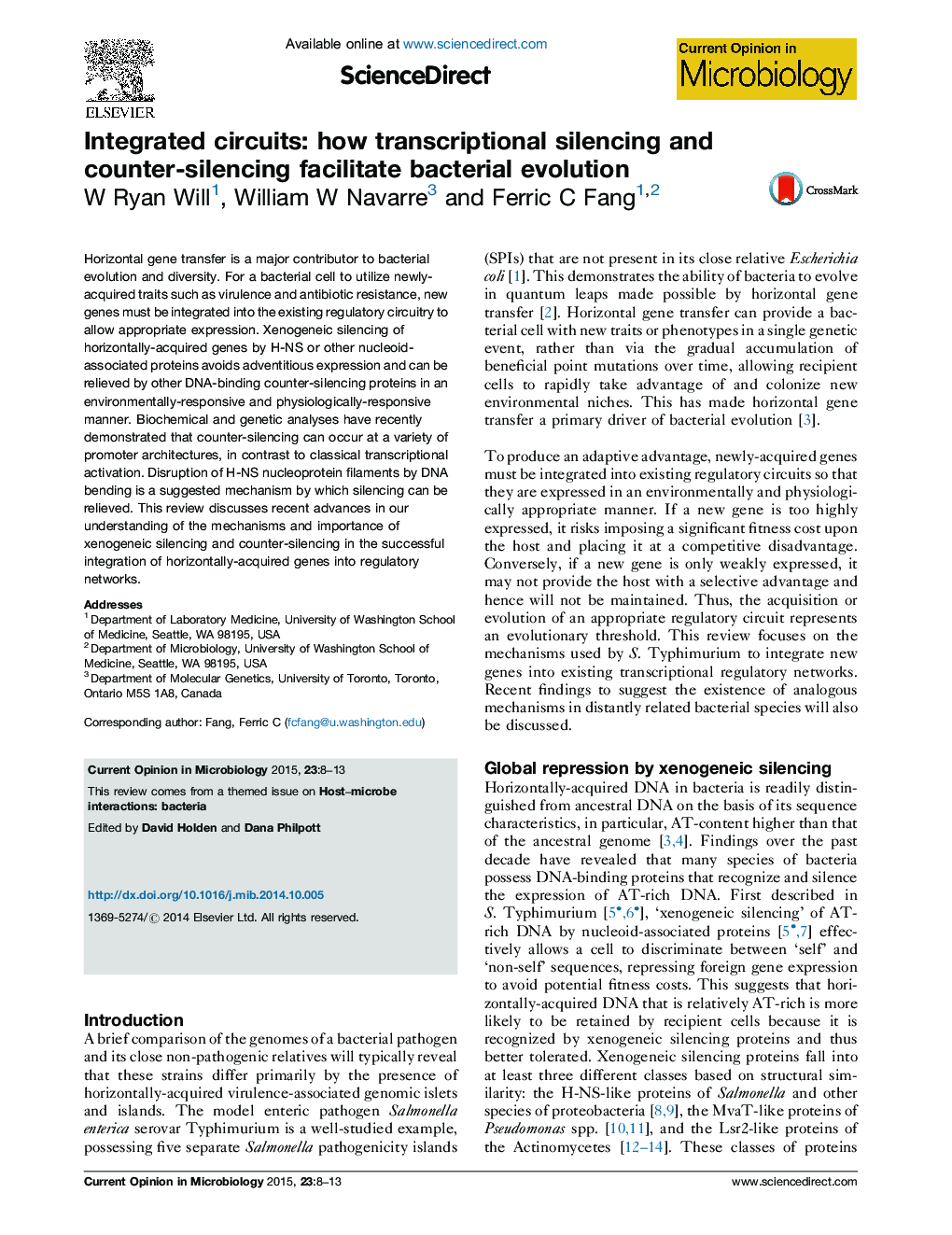| Article ID | Journal | Published Year | Pages | File Type |
|---|---|---|---|---|
| 6131940 | Current Opinion in Microbiology | 2015 | 6 Pages |
Abstract
Horizontal gene transfer is a major contributor to bacterial evolution and diversity. For a bacterial cell to utilize newly-acquired traits such as virulence and antibiotic resistance, new genes must be integrated into the existing regulatory circuitry to allow appropriate expression. Xenogeneic silencing of horizontally-acquired genes by H-NS or other nucleoid-associated proteins avoids adventitious expression and can be relieved by other DNA-binding counter-silencing proteins in an environmentally-responsive and physiologically-responsive manner. Biochemical and genetic analyses have recently demonstrated that counter-silencing can occur at a variety of promoter architectures, in contrast to classical transcriptional activation. Disruption of H-NS nucleoprotein filaments by DNA bending is a suggested mechanism by which silencing can be relieved. This review discusses recent advances in our understanding of the mechanisms and importance of xenogeneic silencing and counter-silencing in the successful integration of horizontally-acquired genes into regulatory networks.
Related Topics
Life Sciences
Immunology and Microbiology
Microbiology
Authors
W Ryan Will, William W Navarre, Ferric C Fang,
